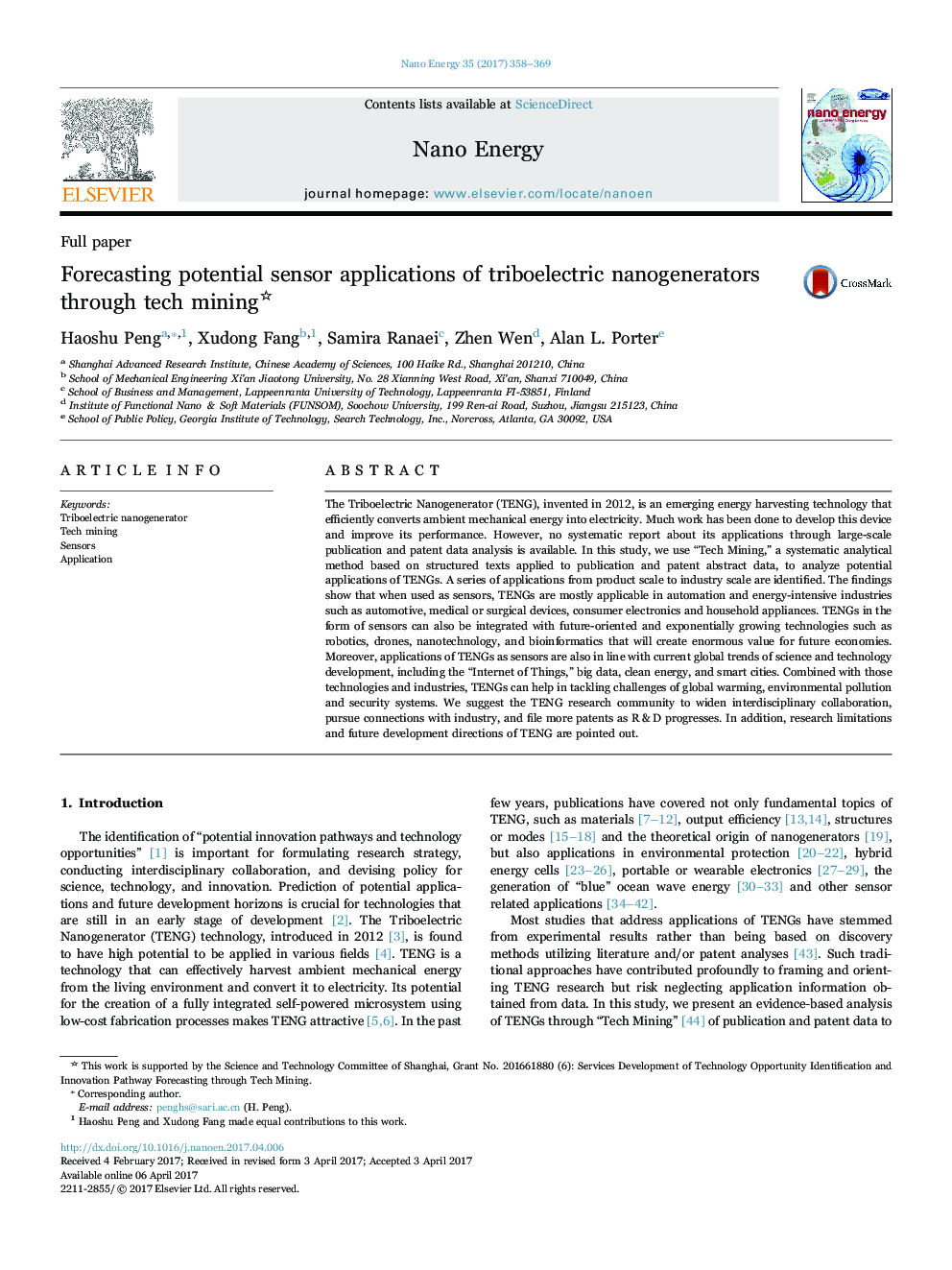| Article ID | Journal | Published Year | Pages | File Type |
|---|---|---|---|---|
| 5452194 | Nano Energy | 2017 | 12 Pages |
â¢The first effort to forecast potential sensor applications of TENGs through Tech Mining methods.â¢Sensor applications of TENGs were identified on 4 levels: usage scenarios, sub-technology, technology and industry.â¢Researchers should widen interdisciplinary collaboration, pursue connections with industry, and file more patents.
The Triboelectric Nanogenerator (TENG), invented in 2012, is an emerging energy harvesting technology that efficiently converts ambient mechanical energy into electricity. Much work has been done to develop this device and improve its performance. However, no systematic report about its applications through large-scale publication and patent data analysis is available. In this study, we use “Tech Mining,” a systematic analytical method based on structured texts applied to publication and patent abstract data, to analyze potential applications of TENGs. A series of applications from product scale to industry scale are identified. The findings show that when used as sensors, TENGs are mostly applicable in automation and energy-intensive industries such as automotive, medical or surgical devices, consumer electronics and household appliances. TENGs in the form of sensors can also be integrated with future-oriented and exponentially growing technologies such as robotics, drones, nanotechnology, and bioinformatics that will create enormous value for future economies. Moreover, applications of TENGs as sensors are also in line with current global trends of science and technology development, including the “Internet of Things,” big data, clean energy, and smart cities. Combined with those technologies and industries, TENGs can help in tackling challenges of global warming, environmental pollution and security systems. We suggest the TENG research community to widen interdisciplinary collaboration, pursue connections with industry, and file more patents as R&D progresses. In addition, research limitations and future development directions of TENG are pointed out.
Graphical abstractDownload high-res image (145KB)Download full-size image
